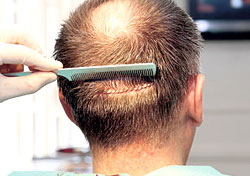Once you have decided to undergo a hair transplant procedure, one thing that you have to realize is that the outcome can never be completely certain. Despite the skill of the doctor, the equipment, and the status of your health, something can go wrong and you should be ready to deal with it.

Common Hair Transplant Problems
The following are the most common problems that can occur after a transplant surgery:
- Discomfort and pain in varying levels can be experienced right after the surgery but since most people are still numb from the medication, others do not really complain at all.
- As with any kind of surgical procedure, you should expect some numbing because some nerves will be cut during the procedure, and this can persist for days and even months.
- Scabs will appear on the affected areas but they will fall off a few weeks after. This can be itchy and unsightly, but this is normal.
- You can also face more serious side effects like cysts, bleeding, and infection.
How to Avoid Hair Transplant Problems
There are different kinds of hair transplant problems that you can encounter before, during, and after the procedure. As a patient, you are part of the team that is supposed to prevent this from happening, so it is important that you know how to do just that.
- Do some research. Even before you go to your doctor’s office for consultation, it will be smart for you to read a little bit about the procedure first, so that you can compose all the right questions. If you know more, you will be able to ask more relevant questions.
- Ask others. Take time to find the doctor’s previous patients who can give you tips on how to effectively deal with the common hair transplant problems that they’ve experienced.
- Follow instructions. Make sure to follow the pre-operative, operative and post-operative instructions that will be given to you. These instructions are given for a reason, and your compliance is a must.
Dealing with the Side Effects
Despite your carefulness and diligence, however, you might still experience some side effects. It is going to be important, therefore, that you know how to properly deal it.
- Shock loss is one of the most common hair transplant problems. This is the thinning of the hair right after the surgery, or sometimes, two or three months after. Expect this as part of the healing process. About 50 to 100 falling hair in a day is the normal range, but beyond that is rather alarming.
- Falling hair is common to the Telogen Phase of healing. This is in preparation for the next phase, which is Anagen, where the hair is expected to start growing normally.
- Some swelling can also be experienced and depending on the transplantation site, the swelling can be confined on the scalp as well as on the forehead and the eye area. If this happens, you can use a moisturizer or regularly spray water on the affected area.
